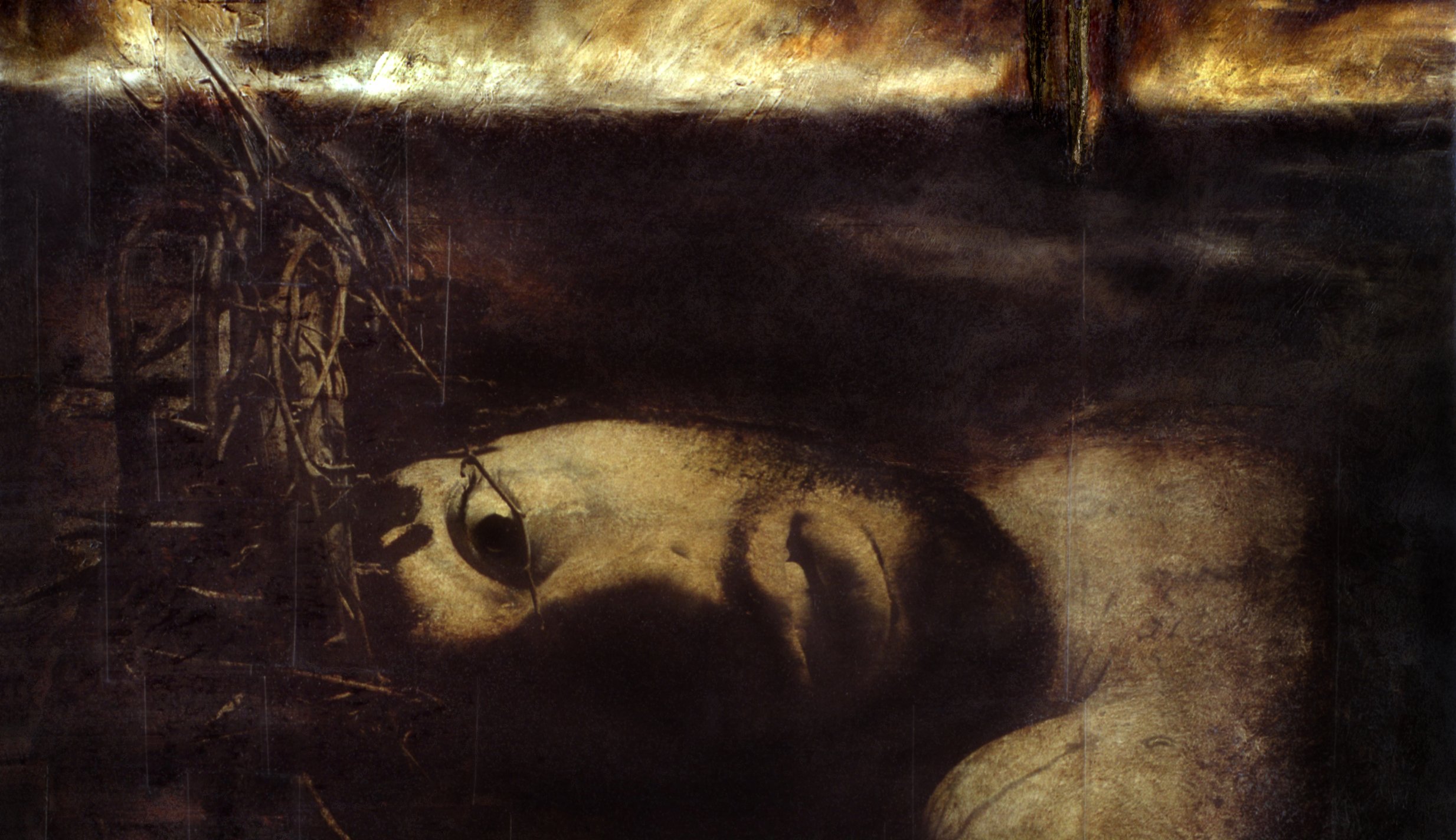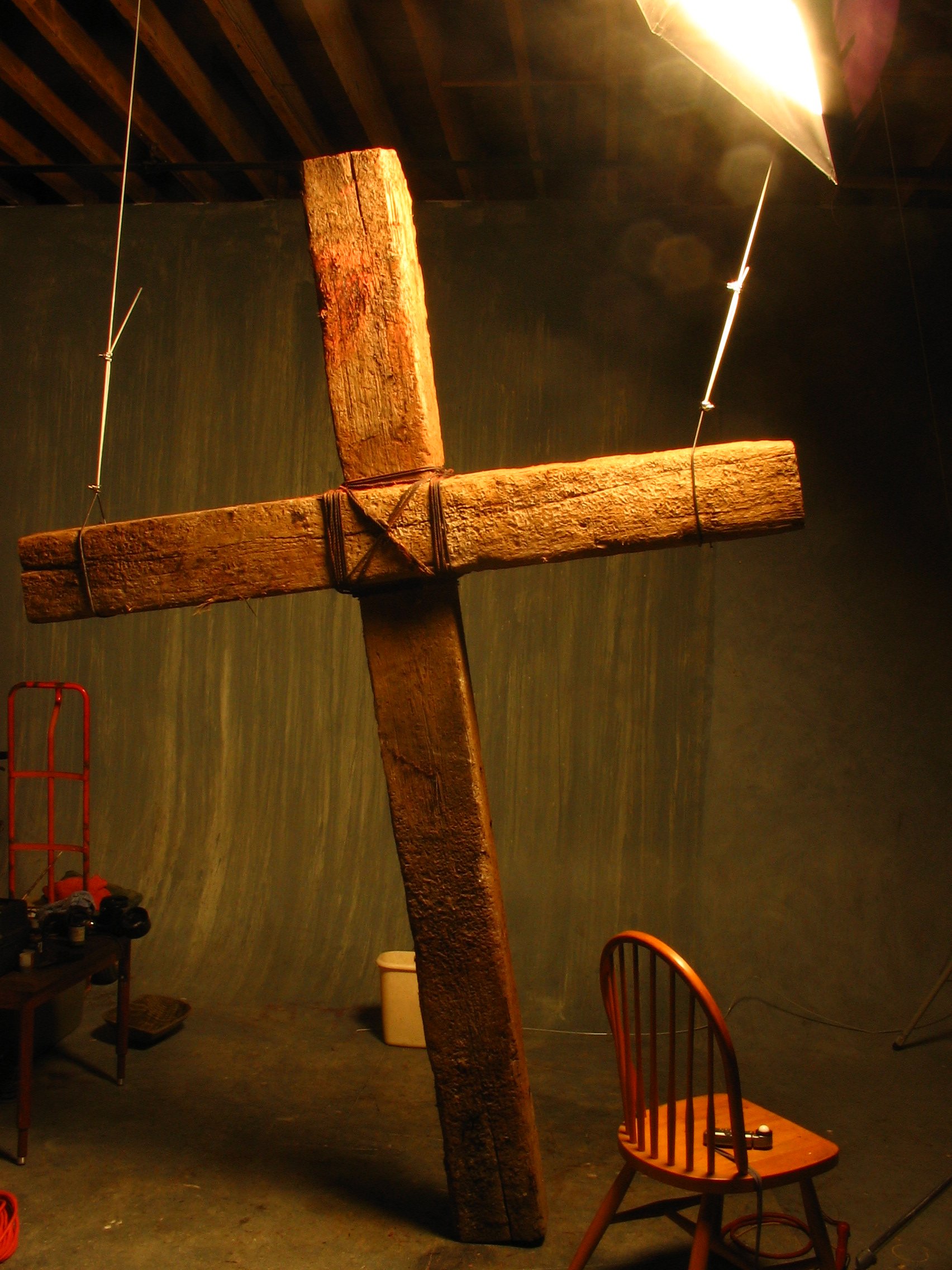THE STATIONS OF THE CROSS - A HISTORY AND JOURNEY
The traditional fourteen Stations of the Cross began not as a series of art works, but as an actual journey - the first being made by Jesus Himself on the way to the cross. From the early days of Christianity, pilgrims retraced his steps along Jerusalem’s Via Dolorosa or Way of Sorrow, stopping at “waypoints” to meditate, pray and contemplate. When the pilgrimage to Jerusalem became too dangerous for travelers, churches began to commission artworks depicting this journey in their home churches so people could walk this intimate journey in safety. They are traditionally observed on Good Friday, the day that Christ was crucified and begin with Jesus being condemned to death till his burial in the tomb. Some churches now include Station Fifteen - The Resurrection which is displayed on Easter Sunday. These are my personal interpretations employing my technique called “OilGraphing” which is creating a hybrid from traditional film photography, oil paint and other media.
THE JOURNEY OF CREATION
My personal journey with the Stations of the Cross began in the fall of 2004 when my friend and mentor Rev. Rebecca Ver Stratten-McSparran had asked me to speak and contribute art at the Worship Arts Liturgy and Preaching conference at Asbury Seminary in Kentucky the next year. This was not without precedent. I had been a working artist my entire adult life and enjoyed public speaking. So, without hesitation (or thinking it through entirely), I said that I wanted to create my own versions of the Stations of the Cross and paint Station Fifteen - The Resurrection live as a culmination. The choice wasn’t random for I had already created a version of Station Ten (Jesus is Stripped) for Fuller Seminary just the year before and had always dreamed of creating the entire series one day. And with that, I was immediately put on the schedule.
I then went home and immediately panicked. I had just committed to something I absolutely had no idea how to do nor the means to do it. So, I just pretended like I did. Not that this helped me. To do the series justice I would need a large cast, costumes and weapons not to mention a huge cross. It would also require thousands of dollars in art supplies, film and equipment. At this stage, I was clearly out of my depths but that didn’t keep me from making preliminary sketches and begin casting trusting that this somehow would all work out.
Then with some help from Rebecca, I was able to secure a grant from Calvin University which would miraculously cover all of the costs. Mostly. The grant came in late February of 2005, but the series needed to be completed and on a truck by Aril 11th to be at the conference by April 17th. That left me less than a month and a half from start to finish. It seemed impossible and by all accounts was, but it was too late. I was committed.
Casting I chose from friends from various communities and I brought back my friend Paolo Durazzo to play Jesus. He had modeled as Jesus years before for my first live oilgraph painting of the crucifixion and I knew he was the only person to play this role. I cast my costume person Sylvia to play Mary despite her having no acting background and the rest of the casting was purely instinctual. Somehow this instinct has served me well over the years. Soon, supplies arrived, canvases were stretched, film and paper acquired and weapons borrowed from a friend of a fiend who was a sword master. That left the cross. Initially I was simply going to construct a traditional cross from 4x6 wood, but when I got to the lumber yard they had just received a shipment of reclaimed railroad ties and I had an intimidating choice to make. The notion seemed absurd, but they were just so expressively worn and beautiful that I made the bold choice to go for it and loaded them into the truck. They weighed 300 pounds and I second guessed myself the whole way home.
I called people more skilled than I in rigging and we constructed a cable and pulley system in the studio after my friend Mark, who was a wood smith, notched the beams together. We had a cross that could kill someone if something went wrong.
THE SHOOTING -THE PRINTING-THE PAINTING-THE COMPLETION
We were into March when shooting began in a whirlwind that was completed in four emotional days. I approached it more like theatre than a photography shoot. Nothing was still and everything moved. No one struck poses but were in continuous action as genuine emotions arose and tears were real. As someone once said, cast well and then trust them. This became evident in every scene. My friend Howard who played Simon had lost his daughter in a horrific car accident years before and through this tragedy found his faith. So when he was forced to carry the cross, the underlying meaning was palpable.
Once shooting was completed, what was a previously a collaborative effort now became an intimate solitary practice that no one could help with. It was me in the darkroom with coffee brewing til 6am every night and always to bed just before the sun rose only to start again after a few hours sleep. Friends would occasionally check on me to see if I ate. I rarely did. I lost track of hours and days and lost twenty pounds. There was simply no time to stop.
By necessity, each Station was printed in multiple sections for I could only develop prints up to 16x20 in size and the canvases were 36x36, the maximum size my enlarger was capable of. When I was done, it looked like a puzzle had exploded.
But the puzzle piece images were reassembled and meticulously glued to the canvases. Hidden elements werenthen added - A piece of cloth from Jesus’ robe, splinters from the cross itself and in Station Four I included a lock of hair from a friend who was about to undergo chemotherapy after her husband wanted me to document him shaving her head while she asked him, “Am I still pretty?” The series was now taking on a deeper and more personal significance not just for me but for others. Stories within stories. And by the time the last images were glued down, I had only five days to paint the entire series. Even now I don’t know how it happened.
It was a form of “lostness” those five days - An entering into some liminal space where I was more of a witness than creator. I remember watching my hands move as if they were someone else’s. Shapes and flames would appear as paint was blended and each Station became a discovery to me. And on April 5th just as the sun rose, the final Station was completed. Just enough time to allow for a week to safely dry. Just enough time to be loaded onto a truck for their journey east. Five days. A miracle.
THE AFTER - SURPRISE SALONS - NEW AUDIENCES
My neighbor Steve was a notorious party hound. His studio was adjacent to mine and held many booze and drug fueled nights of chaos over the years. Nice guy though and a friend. He had been watching me with curiosity over this past month and out of the blue offered to host an improvisational salon of the Stations on the very night I completed them. Why not, I thought? Just don’t smear them.
After having slept through the day I wandered over to find the Stations meticulously hung and lit. It was my first time witnessing them as the series. I was moved and astounded and soon friends and people I had never met began filing in. It was a melange of party people, Christians, non-Christians, atheists and everyone in between. I didn’t think this would go over well but I was beautifully wrong.
There were tears and questions. Genuine questions. Hands covering mouths and long looks of contemplation. The atmosphere was actually reverent and when my close friend told me, “I understand now” I knew the work had achieved what I had hoped for it. That they now had a voice of their own.
Once the Stations were safely on the truck on their way to Kentucky, I now had the only time to shoot and print Station Fifteen. Due to time constraints the only way it could be completed was to bring all the loose elements in my suitcase and assemble it on site the night before my lecture. Station Fifteen - The Resurrection was painted live April 17, 2005 in a twelve minute performance. The series culminated as it began - as something that seemed impossible.
In the years since, I’ve had the humbling honor to be witness to the Stations exhibited throughout the country and displayed in many churches. Each new audience brings a fresh experience which never fails to be moving. At one exhibition in Grand Rapids, I had done two lectures and was meeting with the president and vice-president of Baker Publishing when a young woman from the previous night’s talk came in quietly saying she was hoping she wasn’t interrupting. She brought a mandolin and said she was so moved by Station Fifteen that she wrote a song about it. And with eyes closed, she performed a song that was born less than twelve hours before. When she finished, she politely thanked us and made a humble exit leaving us all in a stunned silence. It was transcendent and I only wished that it could have been recorded. But like her presence, it was meant to be just as it was intended - ephemeral.
My hope is that the Stations continue to speak into the future, find a greater audience and a permanent home.


